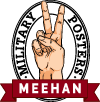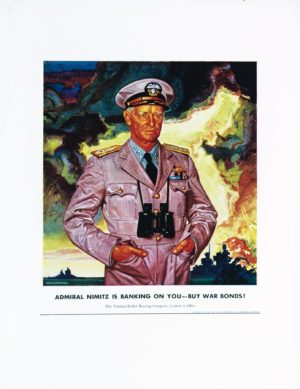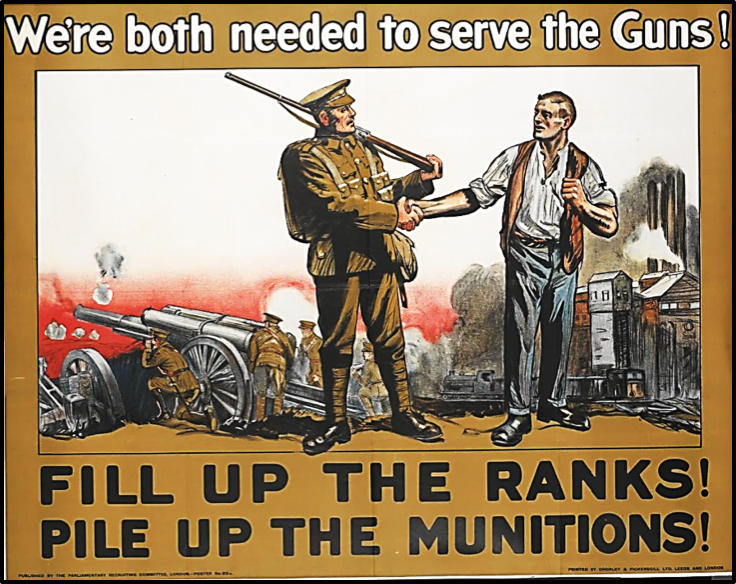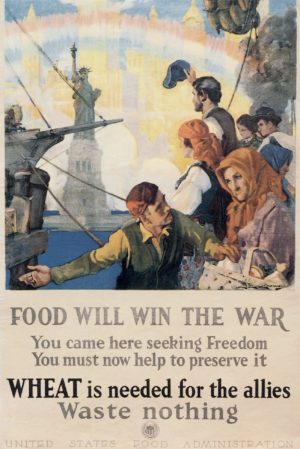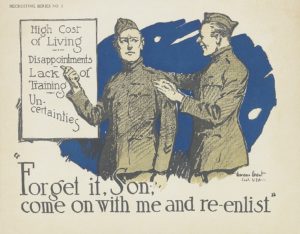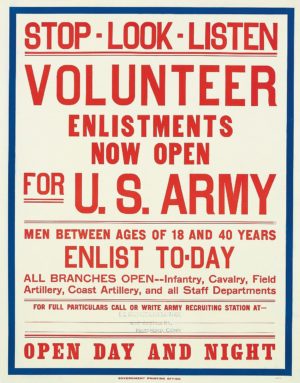Description
Artist Unknown We’re Both Needed to Serve the Guns! 1915. British Tommy and industrial worker amicably shake hands, the traditional symbol of Socialist unity. The poster addresses the interdependence and equal importance accorded both worker and soldier. The first wave of enlistments in 1914 had absorbed many skilled workers. 20×28 near mint, conservation backed.
Bibliography: John R. Johnson in his forthcoming definitive book Your King and Country Need You writes as follows:
A khaki-clad recruit and a munitions worker—representatives of the occupations most vital to the success of the war effort—clasp right hands, a symbol of their cooperative spirit and mutual dependence. Recent critics have pointed out the poster’s resemblance to “traditional images of socialist unity.”[1] Pictured behind the worker is an active munitions plant. Smoke billows from the stacks of the factory buildings and from a locomotive that chugs along, making its way from the plant toward the front, graphically suggesting the connection between the plant’s output and its fundamental purpose. Behind the recruit, the battlefront is represented by a three-man gun crew, who serve a massive and heavy artillery piece (Ordnance BL 60 pdr Mk 1). The officer in charge, a sword strapped to his waist, kneels down and peers through his field glasses to spot enemy targets. Overhead shrapnel shells burst in the distance. The horizon is red with the rays of a rising/setting sun. Khaki-brown—the color of the uniforms, ground, and wide borders—dominates the overall poster. A very narrow black line delimits the image itself. The elegant lower-case letters of the “title-quotation” (though without quotation marks) at the top of the poster are the natural white of the poster paper edged in black. The slogan-like message at the bottom is in simple black capitals.
[1] Philip Dutton, 55. Previously, Barry Curtis (52) had elaborated, the design was “indebted to traditional heraldic images of socialist unity [which] reinforce the equivalence but not the similarity of war and work.” Quoted in Aulich and Hewitt, 41.
